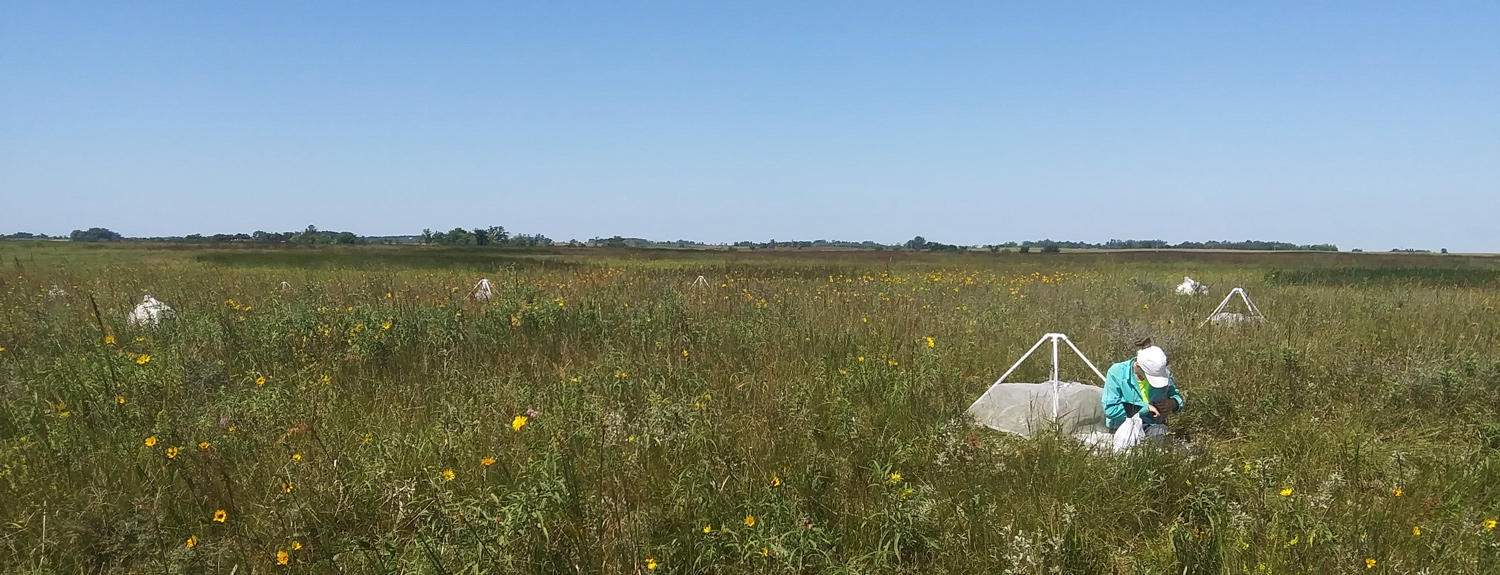
Julia Brokaw
Research Q & A
What’s your hometown?
I am from Upper Black Eddy, Pennsylvania.
What are you currently working on (as supported by the award)?
I am currently studying ground-nesting bee nesting ecology. The majority of bee species are solitary and nest underground, but we we know surprisingly little about where they nest and why. It is unknown whether habitat conservation—like planting wildflowers—also supports the nesting habitat for these abundant bees. My research explores where bees are nesting in tallgrass prairie habitats and if prescribed burning influences their nesting choices.
How are you working toward that goal?
To study where bees are nesting in prairies, I use emergence traps, which are small, lightweight tents with a collection bottle at the top. I set up the tents in the evening, after bees have returned to their nest for the night and secure the tent to the ground. This allows me to detect nests in dense vegetation or thick grasses where nests may be otherwise overlooked.
Why are you focusing your work in that area?
As more and more funding and resources are allocated to habitat restoration for pollinators, it is imperative that we also restore their nesting habitat in addition to foraging resources. Nesting by ground-nesting bees has been consistently overlooked but must be understood for effective conservation measures.
Where are you working on research/field work?
I conducted this research in remnant prairies of western Minnesota close to the North Dakota border on land managed by the Fish and Wildlife Service, The Nature Conservancy and the Minnesota Department of Natural Resources.
I also want to acknowledge that these research sites are on Dakota lands that were stolen by the U.S. Government so that white settlers could start farms and homesteads in the region. The westward expansion of settlers was incentivized by federal policies in the late nineteenth century and occurred during an attempted genocide of the Dakota peoples and broken treaty agreements. It is important to mention this history because my research is conducted in the broader context of land restoration and conservation. I am committed to understanding and re-learning the history of the land in the context of ongoing settler colonialism, to respect and honor treaty rights and indigenous sovereignty in every way possible.
What will your next steps/research be?
The next steps of my research are to examine the wing and mandible wear of the bees that were caught last summer to determine which individuals were actively nesting or emerging from a nest established the previous year. This is important because I want to analyze the bees that were actively nesting and choosing between burned or unburned habitats.
Additionally, I will write a methods paper to outline how I designed and built emergence traps. Commercially available traps are over $100 each and my design is approximately $30 each and made with readily available materials at a hardware store. This will allow for replicable, larger scale research studies on ground-nesting bee ecology.

